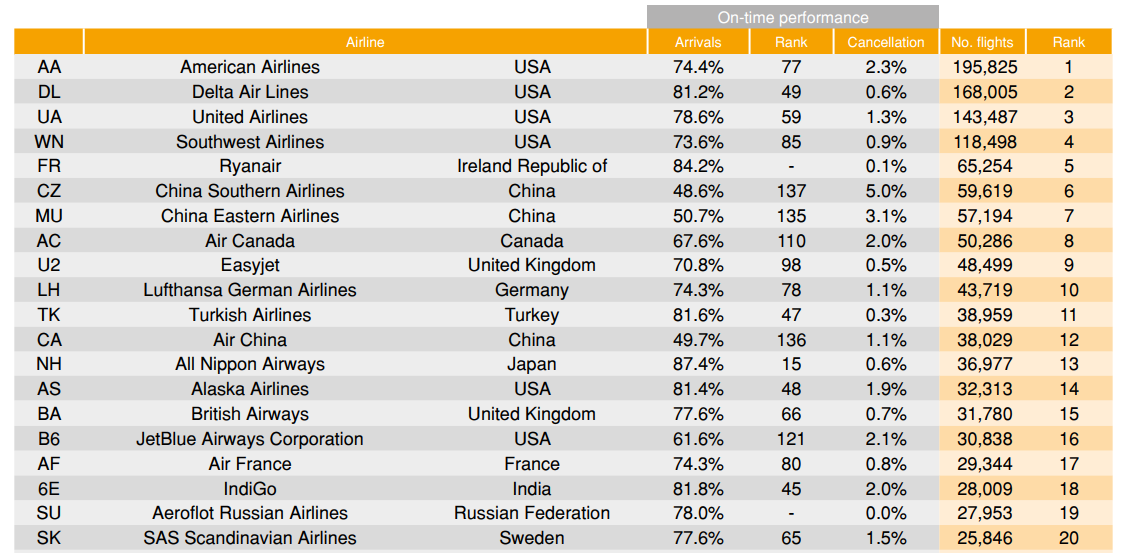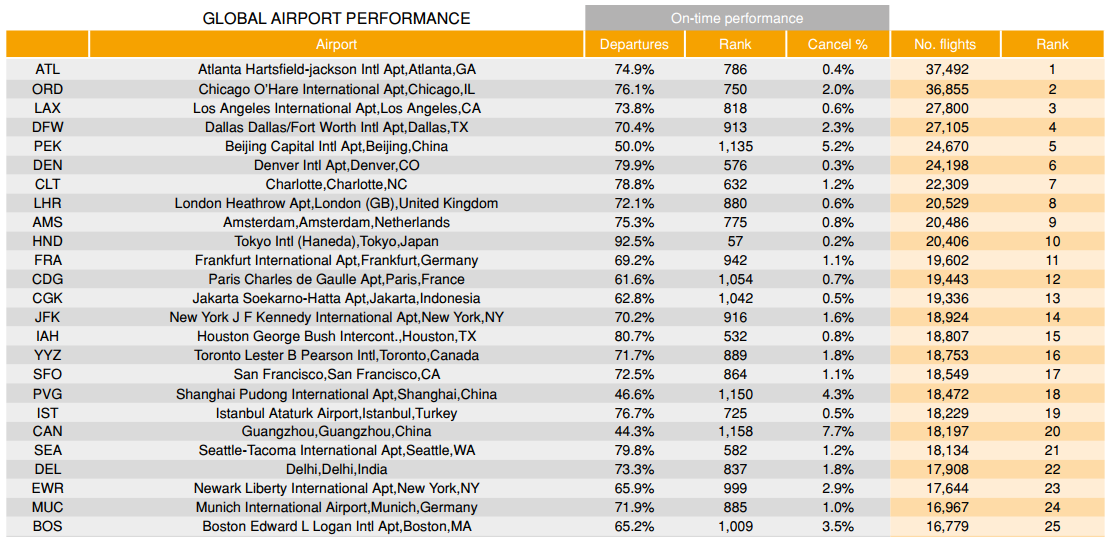Planning and organisation aside, bad weather, strikes or many other external factors can influence the reliability of flights with a delay to a morning departure potentially having a knock-on effect for flights for the rest of the day. At a slot-constrained airport if you miss your departure or arrival time it could have massive repercussions and generate significant costs especially, for example, around late night operations were environmental and noise curfews can be in place.
Airlines have a tough time getting their minds around OTP and how to manage it. They want to keep their aircraft in the air and maximise utilisation, but will need to build in some slack to flight schedules in order to maintain the integrity of their operations. Just taking minutes off an aircraft's down time can translate into savings of $10 million a year across the operation, but not factoring in additional hold time at a hub airport at peak times could result in fines and longer ground times due to missed slots.
OTP is a true complexity, but differs from airline to airline and from airport to airport based upon fleet size, type of operation (full-service or low-cost), type of flight (point-to-point or hub feed), even domestic or International (including differentiation between Schengen and Non-Schengen arrivals in Europe which influence where an aircraft will park at the airport).
Securing 100% reliability is the holy grail, but airlines will monitor their performance from day-to-day, week-to-week, month-to-month to ensure they are delivering a reliable schedule and that performance levels are being maintained or improved by developing an operation that is resilient to disruption and able to catch up more quickly when disruption occurs. For example, when British Airways suffers disruption it will often cancel domestic flights, where markets are served with multiple daily frequencies and passengers can be rebooked or make use of ground transportation if really necessary.
Aviation intelligence provider OAG is one company that is providing regular updates on OTP in the industry, backed by its schedule data. "Today's travellers need to know they are booking the best options for their travel," says the company, and similar to the Similar to the rigorous systems used to rate the hotels industry has designed a programme to recognise consistent on-time performance for the world's airlines and airports.
OAG will release its second 2017 edition of its OTP Stars Programme in October 2017. The biannual report, published in April and October each year based on 12 month rolling data, is becoming a benchmark for measuring airline and airport on-time performance.
The programme has been designed to inform travellers about performance across the globe and gives airlines and airports an official badge that will help to drive consumer confidence in their brand and ultimately give the industry consistent on-time performance KPIs on which to base their aspirations.
As in general industry reporting, an on-time departure or arrival is measured as a flight that operates strictly within 15 minutes of its scheduled time and OAG currently utilises a star rating with the top 10% of airlines and airports receiving 5*. It says this system gives all airports and airlines "the opportunity to showcase and promote their punctuality and differentiate themselves against their competitors".
In its last rankings, the star rating was based on bandings measuring performance based within the following percentages: 5*, an OTP of greater than 90%; 4*, an OTP of 87.5% - 89.9%; 3*, an OTP of 83.0% - 87.4%; 2*, an OTP of 80.0% - 82.9%; and 1*, an OTP of 75.0% to 79.9%. Airlines and airports must have a minimum of 600 operations a month to be eligible for a star.
In April 2017, OAG awarded 5* ratings to four airlines and nine airports. On the airline side these comprised Safair, South Africa; Jazeera Airways, Kuwait; Sky Airline, Chile and airBaltic, Latvia. On the airport side these comprise Minsk International Airport, Belarus; Paris Beauvais-Tille Airport, France; Dortmund Airport, Germany; Tokushima Airport and Kōchi Airport, Japan; Hilo International Airport, Hawaii, USA; and Newcastle International Airport, Birmingham Airport and Cardiff Airport in the UK.
Ahead of its biannual updates, OAG also provides monthly OTP figures. The latest data for June 2017 shows that only two of the world's ten largest airlines and six of the top 20 delivered an OTP performance above 80% with Japan's All Nippon Airways (ANA) operating at the highest OTP rate.
CHART - Top 20 Airlines On-Time Performance Metrics (June 2017) Source: OAG
Source: OAG
It is Japan that also leads the way in terms of reliability when you analyse the OTP metrics of the world's top 25 airports with Tokyo's Haneda International Airport delivering a reliability index more than 11 percentage points above its nearest rival within the grouping. The data also highlights how capacity constraints (both on the ground and in the air) is impacting operations in China with more than half of flights out of Beijing, Guangzhou and Shanghai being declared as 'late'.
CHART - Top 25 Airports On-Time Performance Metrics (June 2017) Source: OAG
Source: OAG
NOTE: Look out for our report next week (August 1, 2017) as we detail the airlines and airports with the best OTP in July 2017 across the EMEA market.